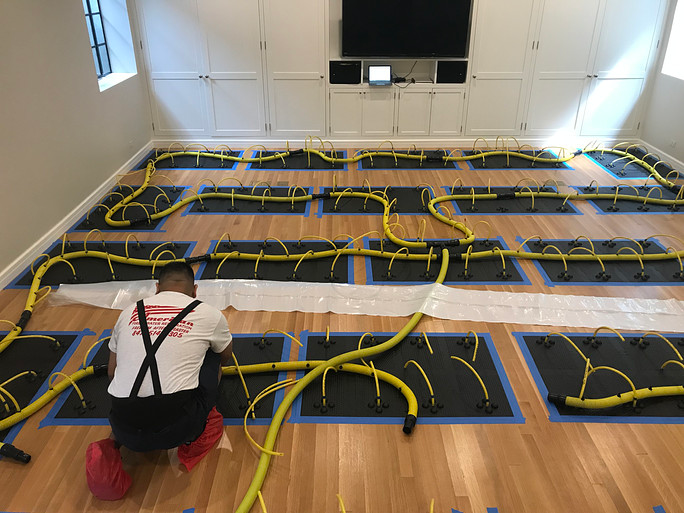
Beyond The Surface: Understanding The Thorough Water Damage Restoration Process
Water damage can be terrible for both homes and businesses. It can lead to structure problems, mold growth, and even health risks. It’s impossible to say enough about how important it is to have a thorough water damage repair process when problems like these happen. In addition to cleaning up the surface, a full repair plan is needed to make sure that all signs of water damage are fixed and properties are returned to the way they were before the loss.
Assessing The Damage
The first thing that needs to be done to fix water damage is a careful inspection of the damage. Professionals from a trustworthy water repair company like DaySpring first look at the damaged areas to find out where the water came from, what kind of water contamination there is, and how bad the damage is to the property. This initial evaluation is very important for making a good repair plan that fits each case’s unique needs.
Water Extraction
Once the assessment is complete, the next step is water extraction. Using specialized equipment such as pumps, extractors, and vacuums, the restoration team removes standing water from the premises. This step is very important to keep the property from getting worse and to lower the risk of mold growth and building problems.
Drying And Dehumidification
After water extraction, the focus shifts to drying and dehumidification. Even after visible water is removed, moisture may still linger within walls, floors, and other porous materials. Professional drying tools, like air movers and dehumidifiers, are used to completely dry the areas that have been damaged. This stops mold growth and other damage from happening.
Cleaning And Sanitizing
Cleaning and sanitizing are essential steps in the water damage restoration process, particularly in cases involving contaminated water. Antimicrobial agents are used to clean surfaces and things to get rid of bacteria, fungi, and other dangerous microorganisms. This not only ensures the safety of the occupants but also helps prevent lingering odors and the spread of pathogens.
Structural Repairs And Restoration
Beyond surface-level cleanup, thorough water damage restoration often involves structural repairs and restoration. Damaged drywall, flooring, insulation, and other structural components are repaired or replaced as needed to restore the integrity of the property. This phase may also include cosmetic repairs to ensure that the property looks as good as new once the restoration process is complete.
Monitoring And Follow-Up
After the obvious signs of water damage have been fixed, it is important to keep an eye on things and make sure there are no secret problems. Professional restoration companies like DaySpring conduct thorough inspections and follow-up visits to ensure that the property remains dry and free from mold or other potential issues. This proactive approach helps to safeguard the long-term health and integrity of the restored property.
Conclusion
In conclusion, a thorough water damage restoration process goes beyond surface-level cleanup to address all aspects of water damage and ensure the complete restoration of affected properties. From initial assessment to structural repairs and follow-up monitoring, each step is essential in returning homes and businesses to their pre-loss condition. By entrusting the restoration process to a reputable water restoration service like DaySpring, property owners can have peace of mind knowing that their investment is in good hands. So, when faced with water damage, remember that the key to recovery lies in going beyond the surface and embracing a comprehensive restoration approach.